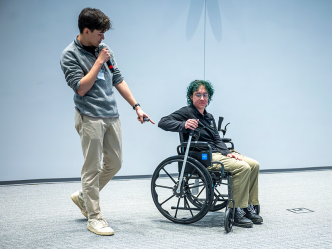Researchers from the Medical College of Georgia at Augusta University, led by Raghavan Raju, PhD, have discovered a promising therapeutic approach that could improve outcomes for sepsis patients by targeting senescent cells, offering a potential breakthrough in sepsis treatment.
Sepsis is a leading cause of death in critically ill patients worldwide. Despite advances in treatment, many sepsis patients suffer from organ failure.
In a study published in the journal Aging Cell, Raju and his team showed that senescent cells emerge in mice after sepsis. When these cells were cleared with senolytics, a class of drugs, organ function and survival improved. The study focused on the liver, a major organ affected by sepsis.
Senescence is a biological process where cells stop dividing and lose their ability to repair themselves. While often associated with aging, it can also occur in response to acute stress conditions. Once cells become senescent, they are hard to kill and can linger in the system for a long time. They don’t remain silent, instead secreting inflammatory factors and driving disease progression.
“Senescence during sepsis creates a vicious cycle,” explained Raju, a professor in the Department of Pharmacology and Toxicology and the principal investigator for the study. “As sepsis progresses, senescent cells accumulate and release inflammatory signals, which attract even more immune cells, further intensifying organ dysfunction.”

The researchers used advanced techniques to track and characterize senescent cells in the liver following sepsis. They found that sepsis rapidly induced senescence in multiple liver cell types, including hepatocytes, endothelial cells and immune cells like macrophages. These senescent cells were marked by the upregulation of a protein called p21, which plays a key role in inducing and maintaining the senescence state.
Given the harmful effects of senescent cells, the researchers tested a potential treatment using senolytics, drugs that specifically target and eliminate them. They used a combination of two drugs, dasatinib and quercetin, which have shown promise in other studies for clearing senescent cells and reducing disease burden.
The results showed that the mice treated with the senolytic combination had significantly improved survival rates compared to untreated mice. The subjects also showed a decreased number of senescent cells in the liver, reduced secretion of harmful inflammatory factors, a marked reduction in liver damage and improved liver function.
“We were able to demonstrate that removing senescent cells in sepsis not only reduces the molecular markers of senescence but also significantly improves survival,” Raju said. “This suggests that targeting senescent cells with senolytics could be a game-changer for sepsis treatment.”

The study provided new insights into how the liver responds to sepsis at the cellular level. Using single-cell RNA sequencing, the researchers mapped the different cell types in the liver and observed that sepsis induced a shift in immune cell populations. In particular, they found that macrophages became reprogrammed into a more inflammatory state following sepsis. Many of these newly emerged macrophages also exhibited senescence phenotype.
“We were able to see how senescent cells in the liver not only contribute to local tissue damage but also actively influence the immune response,” said Rupa Lavarti, PhD, first author on the study.
While the study focused on young mice, the findings have significant implications for treating sepsis in older individuals, who tend to have a higher burden of senescent cells due to aging.
“This research is a step forward in understanding how senescence contributes to sepsis-induced organ damage and mortality,” Raju said. “It opens up new avenues for treatment, not just for sepsis, but also for other acute conditions where organ dysfunction is driven by cellular stress and inflammation.”
The findings of this groundbreaking research are promising. Currently, senolytic therapies are still in the experimental stages, and much more work is needed to determine their safety and effectiveness in humans. However, the success of the senolytics in this preclinical model offers hope that this class of drugs could eventually become a vital part of the treatment arsenal for sepsis and other inflammatory diseases. As the field of senescence biology continues to evolve, treatments targeting senescent cells could transform how we approach sepsis, aging and other age-related diseases.
The study’s authors include Lavarti; Lun Cai, PhD; Tatiana Alvarez-Diaz; Thalia Medina-Rodriguez; Sergei Bombin; and Raju. Raju’s research is funded by grants from the National Institutes of Health, the U.S. Department of Veterans Affairs and the Department of Defense.
Discoveries at Augusta University are changing and improving the lives of people in Georgia and beyond. Your partnership and support are invaluable as we work to expand our impact.
 Augusta University
Augusta University




